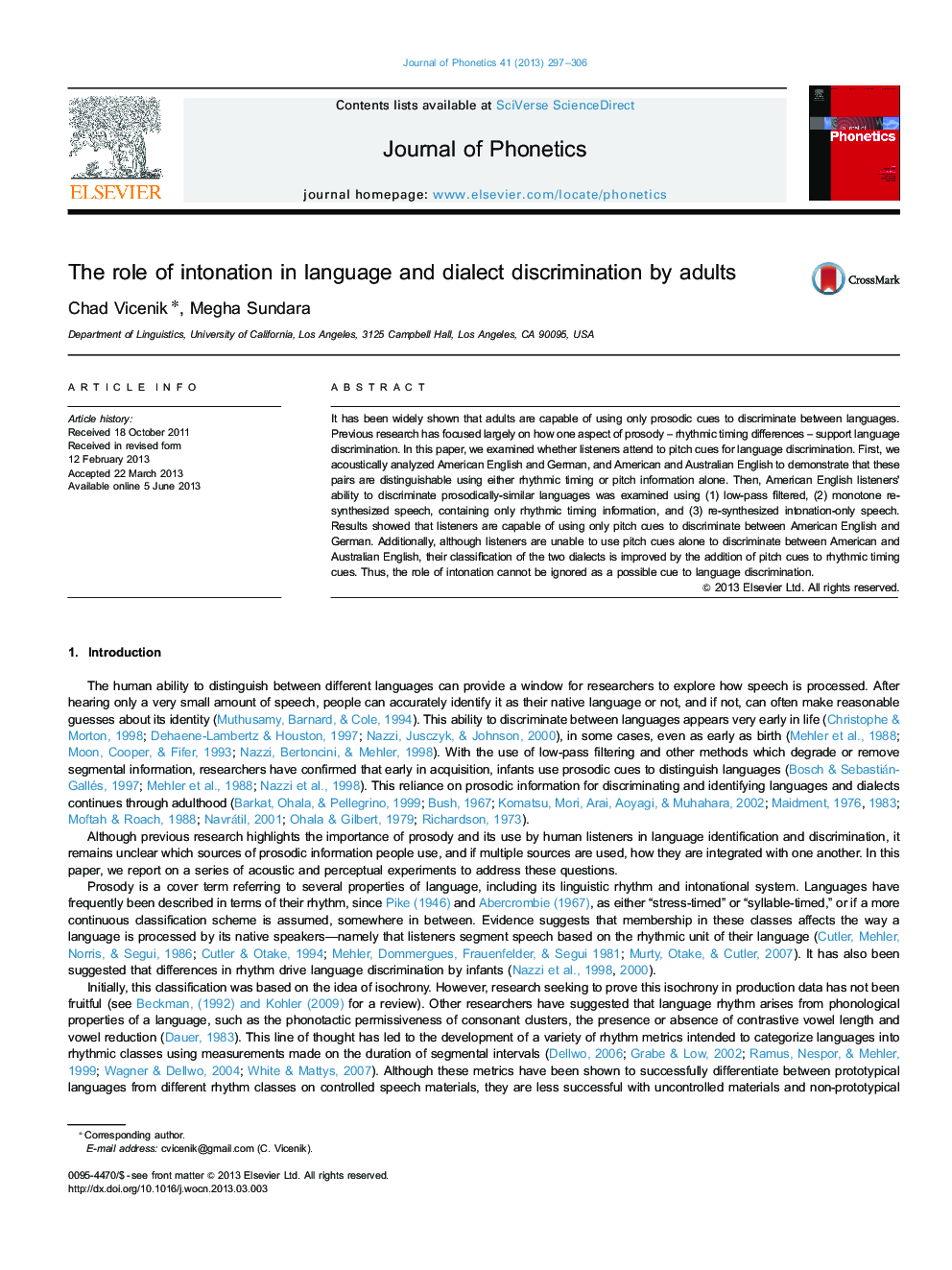| Article ID | Journal | Published Year | Pages | File Type |
|---|---|---|---|---|
| 1100888 | Journal of Phonetics | 2013 | 10 Pages |
•Tests discrimination on American & Australian English, and American English & German.•Examines prosodic cues – rhythmic timing or pitch – used in language discrimination.•Listeners can use only rhythm and only pitch to distinguish languages.•Access to both rhythm and pitch cues can improve discrimination ability.
It has been widely shown that adults are capable of using only prosodic cues to discriminate between languages. Previous research has focused largely on how one aspect of prosody – rhythmic timing differences – support language discrimination. In this paper, we examined whether listeners attend to pitch cues for language discrimination. First, we acoustically analyzed American English and German, and American and Australian English to demonstrate that these pairs are distinguishable using either rhythmic timing or pitch information alone. Then, American English listeners' ability to discriminate prosodically-similar languages was examined using (1) low-pass filtered, (2) monotone re-synthesized speech, containing only rhythmic timing information, and (3) re-synthesized intonation-only speech. Results showed that listeners are capable of using only pitch cues to discriminate between American English and German. Additionally, although listeners are unable to use pitch cues alone to discriminate between American and Australian English, their classification of the two dialects is improved by the addition of pitch cues to rhythmic timing cues. Thus, the role of intonation cannot be ignored as a possible cue to language discrimination.
